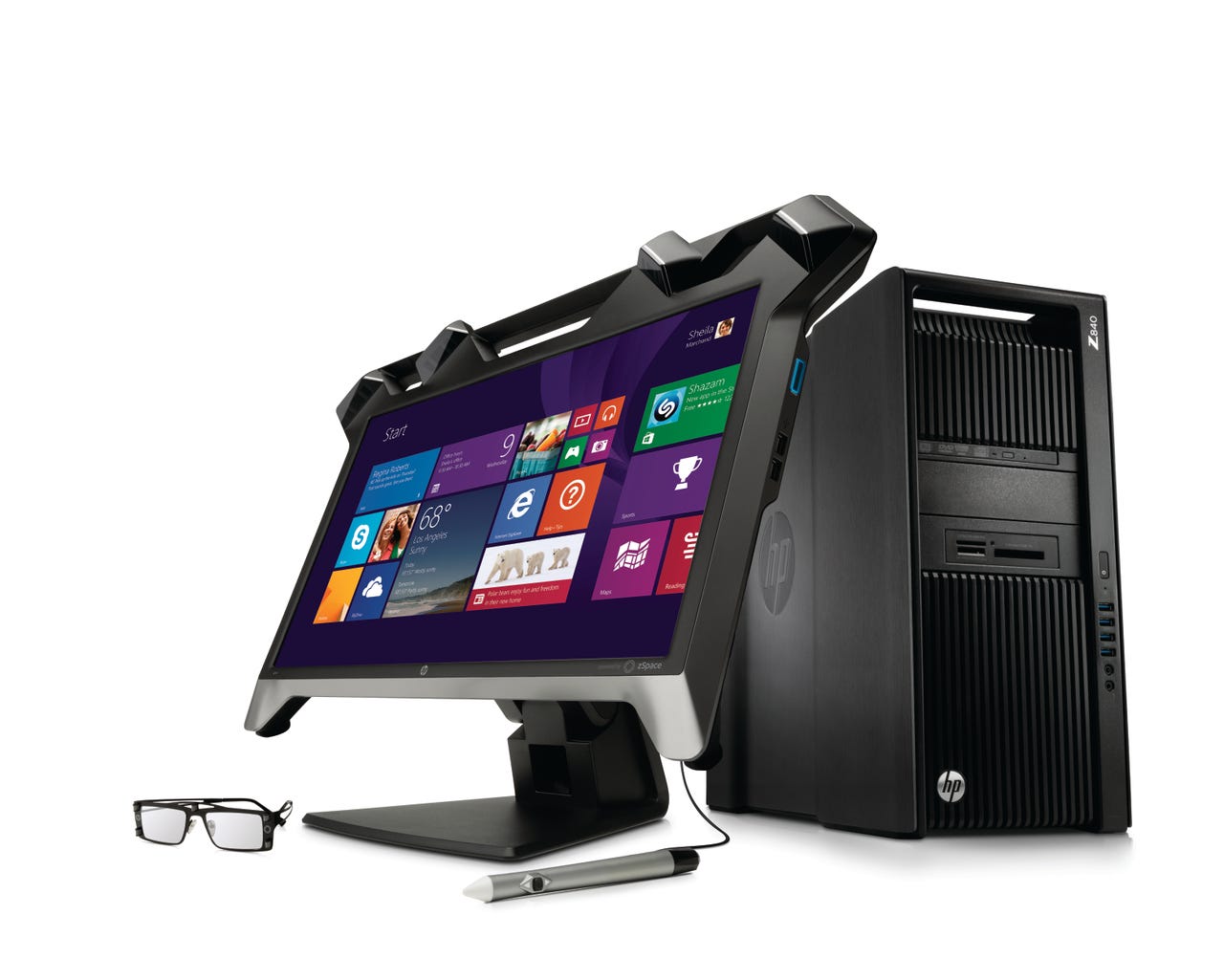HP launches virtual reality monitor: Will business, app makers buy in?


HP on Monday launched a virtual reality display, dubbed the HP Zvr, that could have enterprise and education uses assuming applications become available en masse.
Featured
The HP Zvr is billed as a step toward "true holographic viewing" and a test drive of the display was notable because it allowed you to manipulate content, dissect frogs, inspect the inner workings of the heart and play with architecture options.
At CES 2015, HP unveiled the Zvr as part of a series of displays. HP, like other display players, are rolling 4K and 5K ultra high-definition models. The products, launched at CES 2015, come as UHD screens are going more mainstream. HP's Z27s and Z24s are 4K displays and the Z27q is a 5K version. HP also rolled out the HP Z34c, HP ENVY 34c, HP EliteDisplay S270c and HP Pavilion 27c curved displays. The curved displays enable better visuals and audio, but also allow for room for productivity.
But for long-term impact, it's worth pondering HP's virtual reality display, which coupled with a headset and stylus used to grab items, has potential for work. HP's Zvr is a product of a partnership with zSpace, which specializes in immersive reality technology. HP's broad theme is that it is aiming to bridge virtual and physical worlds and can bring more distribution to zSpace's technology.
Among the key features:
- 23.6" diagonal Full HD2 stereoscopic display with full images rendered for each eye
- Its own user interface
- Passive tracking eyewear
- Stylus pen that allows you to rotate, navigate, manipulate and zoom on items
- Sharing with 2D displays for show and tell and demonstrations
- DisplayPort and DVI connectivity
- Adjustable height and tilt
- Pricing and availability in the U.S. Spring
Virtual reality for work?
The big question is whether virtual reality (VR) will have enterprise use cases this year. CES 2015 is filled with various headsets and tools. Oculus, Samsung and others will be focusing on VR with demos and hardware.
But like 3D printing, the consumer buzz may be well ahead adoption at scale. HP is betting that the Zvr will be used for education and training, architecture and computer aided design and collaboration between architects, engineers and contractors.
All of those industries could use VR technology, but the big issue for HP will be spurring third party software vendors to chime in. As of the CES launch, HP didn't have a large ecosystem of applications. The Zvr would seem like a natural fit for a vendor like Autodesk, health publishers and other software tools.
ZSpace does give HP some applications to push through its channel. For instance, zSpace has a modeling tool, an application to build other apps and a user interface toolkit. ZSpace has already built science and education apps as well as software for training, design, research and the medical field.
What's lacking for zSpace and HP's Zvr is independent software providers. Until that ecosystem is built, however, it's worth keeping an eye on the Zvr, its pricing and how it could work in the enterprise.
My hunch is that the Zvr could be the start of intuitive VR interaction in the enterprise, but 2015 may be a stretch. A lot will depend on the price and business cases for pilots.